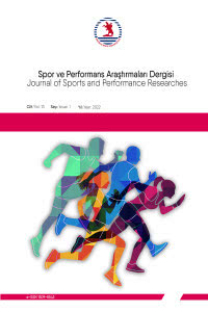DOI No: 10.17155/spd.08803 SPOR KAYNAKLI DENTAL TRAVMALAR, TRAVMALARIN TEDAVİLERİ VE KORUNMA YÖNTEMLERİ
___
- 1. Gardner DC, Warren SA. Careers and disabilities: A career education approach. Connecticut: Greylock Publishers; 1978.
- 2. Rotter J. Social learningand clinical psychology. New York Prentice-Hall; 1954.
- 3. Akbulut E. Müzik eğitimi anabilim dalı öğrencilerinin denetim odaklarına ilişkin algıları. Gazi Eğitim Fakültesi Dergisi, 2006;26 (3): 171-180.
- 4. Davies GM, Binik YM, Gorman P, Dattell M, McCloskey B, Oscar G, et al. Perceived self-efficacy outcome expectancies and negative mood states in and stage renal disease. Journal of Abnormal Psychology, 1982; 91(4): 241-244.
- 5. Diesterhaft K, Gerken K. Self-conceptandlocus of control as related to achievement of junior high students. Journal Psychoeducational Assessment,1983; 12(1): 367-375.
- 6. Anderson A, Hattie J, Hamilton RJ. Locus of control, self- efficacy, andmotivation in differents chools: Is moderation the key to success?. Educational Psychology, 2005;25 (5): 517-535.
- 7. Tyler DK, Vasu ES. Locus of control, self-esteem, achievement motivation, and problem-solving ability; LOGO writer and simulations in the fifth grade classroom. Journal of Research on Computing in Education, 1995;28 (1): 98-121.
- 8. Weinberg RS, Gould D. Foundations of sport and exercise psychology (3rd ed.). Champaign, IL: Human Kinetics; 2003.
- 9. Weinberg RS, Gould D. Foundations of sport and exercise psychology. Human Kinetics. Champaign, Ill:USA, 5th edition; 2011.
- 10. Dweck CS. Motivational processes affecting learning. AmericanPsychologist,1986;41: 148-156.
- 11. Nicholls J. Achievement motivation: Conceptions of ability, subjective experience, task choice and performance. Psychologica Review, 1984;91:328346.
- 12. Elliot AJ. Approach and avoidance motivation and achievement goals. Educational Psychologist, 1999;34:169-189.
- 13. Elliot AJ, McGregor HA. A 2x2 achievement goal framework. Journal of Personality and Social Psychology, 2001;80(3): 501519.
- 14. Eliot AJ, Thrash TM. Achievement goals and hierarchical model of achievement motivation. Educational Psychology Review, 2001;13 (2): 139156.
- 15. Akın A. Achievement goals and academic locus of control: structural equation modeling. EJER, 2010;38:1-
- 16. Buluş M. Öğretmen Adaylarında Bireysel Farklılıklar Perspektifinden Amaç Yönelimleri, Denetim Odağı ve Akademik Başarı Kuram ve Uygulamada Eğitim Bilimleri, 2011;11(2):529-546.
- 17. Akın A. Akademik kontrol odağı ölçeği: geçerlik ve güvenirlik çalışması. Çukurova Üniversitesi Eğitim Fakültesi Dergisi, 2007;34:9-17.
- 18. Akın A. 2x2 Başarı yönelimleri ölçeği: Geçerlik ve güvenirlik çalışması. Sakarya Üniversitesi Eğitim Fakültesi Dergisi. 2006; 12: 1-13.
- 19. France MK, Pierrakos O, Russell J, Anderson RD. Measuring achievement goal orientations among freshman engineering students. Paper presented at the annual American Society for Engineering Education south eastern section conference. Blecksburg, VA; 2010.
- 20. Koç C, Karabağ S. İlköğretim ikinci kademe (6-8. sınıf) öğrencilerinin bilişüstü yetileri ile başarı yönelimlerinin incelenmesi. NWSA: Education Sciences. 2013;8(2):308-22.
- 21. Morris RL, Kavussanu M. Antecedents of approach-avoidance goals in sport. Journal of Sports Sciences, 2008;26:465-476.
- 22. Howell AJ,Buro K. Implicit beliefs, achievement goals, and procrastination: a meditational analysis. Learn Individual Differences, 2009;19:151154.
- 23. Eren A. Examining the teacher efficacy and achievement goals as predictors of Turkish student teachers conceptions about teaching and learning. Australian Journal of Teacher Education, 2009;34(1):68-87.
- 24. Kazak Cetinkalp Z. The relationship between academic locus of control and achievement goals among physical education teaching program students. World Applied Sciences Journal, 2010;10(11):1387-1391.
- ISSN: 1309-5110
- Yayın Aralığı: 3
- Başlangıç: 2010
- Yayıncı: Ondokuz Mayıs Üniversitesi Yaşar Doğu Spor Bilimleri Fakültesi
FUTBOLCU ÇOCUKLARDA SEÇİLMİŞ MOTORİK ÖZELLİKLER ARASINDAKİ İLİŞKİNİN İNCELENMESİ
CENGİZ TAŞKIN, ÖNDER KARAKOÇ, Ersin NACAROĞLU, Cemalettin BUDAK
Yeşim DENİZ, AYŞE ZEYNEP ZENGİN, MUSA ÇON
SPOR KAYNAKLI DENTAL TRAVMALAR, TRAVMALARIN TEDAVİLERİ VE KORUNMA YÖNTEMLERİ
Yeşim DENİZ, Ayşe ZENGİN, Musa ÇON
ADEM POYRAZ, ORHAN BAŞ, YÜCEL OCAK, İRFAN YILDIRIM, YUNUS TORTOP
Adem POYRAZ, Orhan BAŞ, Yücel OCAK, İrfan YILDIRIM, Yunus TORTOP
BEDEN EĞİTİMİ ÖĞRENCİLERİ, ÖĞRETMENLERİ VE DANSÇILARIN FİZİKSEL BENLİK ALGILARININ KARŞILAŞTIRILMASI
PELİN AKYOL, VEDAT ERİM, BADE YAMAK
BEDEN EĞİTİMİ ÖĞRETMENLERİNİN ZAMAN YÖNETİMİ BECERİLERİNİN İNCELENMESİ
